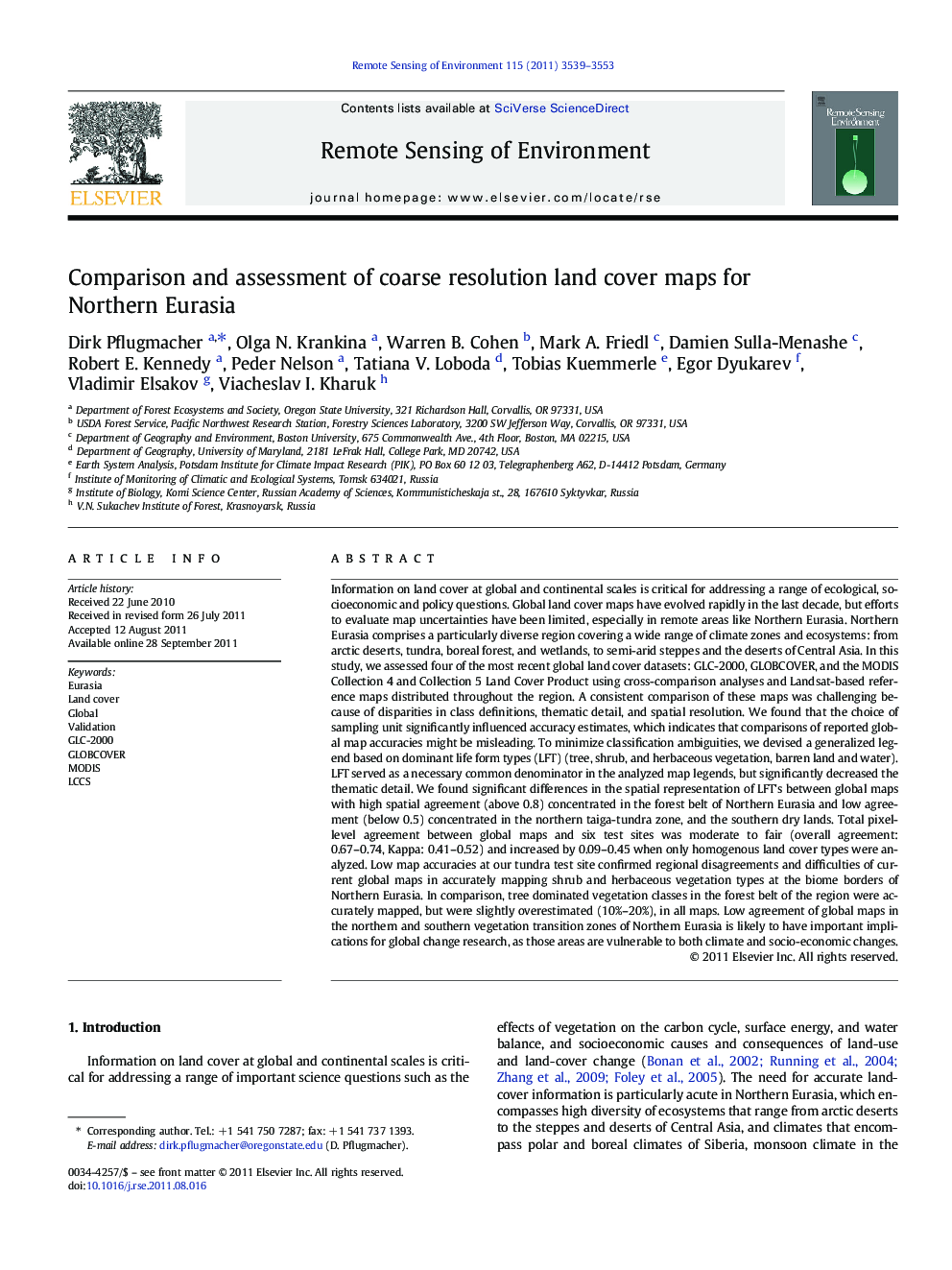| کد مقاله | کد نشریه | سال انتشار | مقاله انگلیسی | نسخه تمام متن |
|---|---|---|---|---|
| 4459498 | 1621285 | 2011 | 15 صفحه PDF | دانلود رایگان |

Information on land cover at global and continental scales is critical for addressing a range of ecological, socioeconomic and policy questions. Global land cover maps have evolved rapidly in the last decade, but efforts to evaluate map uncertainties have been limited, especially in remote areas like Northern Eurasia. Northern Eurasia comprises a particularly diverse region covering a wide range of climate zones and ecosystems: from arctic deserts, tundra, boreal forest, and wetlands, to semi-arid steppes and the deserts of Central Asia. In this study, we assessed four of the most recent global land cover datasets: GLC-2000, GLOBCOVER, and the MODIS Collection 4 and Collection 5 Land Cover Product using cross-comparison analyses and Landsat-based reference maps distributed throughout the region. A consistent comparison of these maps was challenging because of disparities in class definitions, thematic detail, and spatial resolution. We found that the choice of sampling unit significantly influenced accuracy estimates, which indicates that comparisons of reported global map accuracies might be misleading. To minimize classification ambiguities, we devised a generalized legend based on dominant life form types (LFT) (tree, shrub, and herbaceous vegetation, barren land and water). LFT served as a necessary common denominator in the analyzed map legends, but significantly decreased the thematic detail. We found significant differences in the spatial representation of LFT's between global maps with high spatial agreement (above 0.8) concentrated in the forest belt of Northern Eurasia and low agreement (below 0.5) concentrated in the northern taiga-tundra zone, and the southern dry lands. Total pixel-level agreement between global maps and six test sites was moderate to fair (overall agreement: 0.67–0.74, Kappa: 0.41–0.52) and increased by 0.09–0.45 when only homogenous land cover types were analyzed. Low map accuracies at our tundra test site confirmed regional disagreements and difficulties of current global maps in accurately mapping shrub and herbaceous vegetation types at the biome borders of Northern Eurasia. In comparison, tree dominated vegetation classes in the forest belt of the region were accurately mapped, but were slightly overestimated (10%–20%), in all maps. Low agreement of global maps in the northern and southern vegetation transition zones of Northern Eurasia is likely to have important implications for global change research, as those areas are vulnerable to both climate and socio-economic changes.
► We assessed and compared four global land cover maps for Northern Eurasia.
► A common legend based on dominant life form types bridged thematic map differences.
► Significant map disagreements in biome transition zones and for non-forest classes.
► Choice of sampling unit affects estimates of map accuracy.
► No single map performed best across all test sites and land cover classes.
Journal: Remote Sensing of Environment - Volume 115, Issue 12, 15 December 2011, Pages 3539–3553